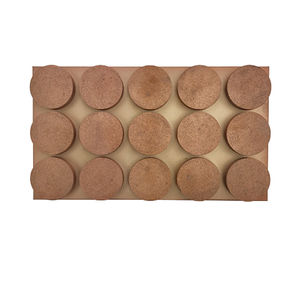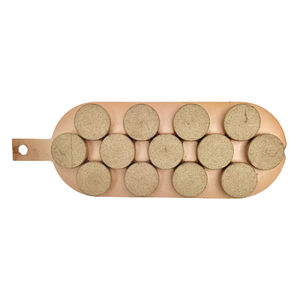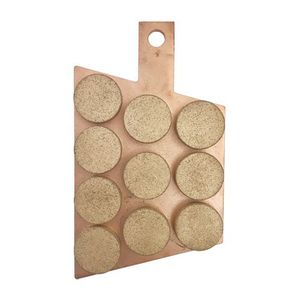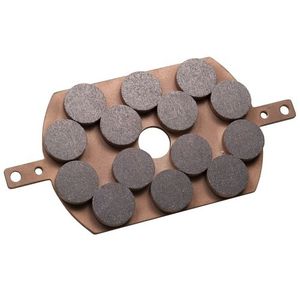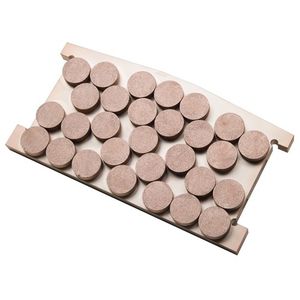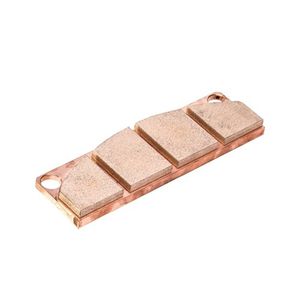
- Power Transmission - Mechanical components
- Mechanical Transmission
- Wind turbine brake pad
- Industrial Clutch Parts

- Products
- Catalogs
- News & Trends
- Exhibitions
Wind turbine brake pad 3000 seriessintered metal


Add to favorites
Compare this product
Characteristics
- Specifications
- for wind turbine, sintered metal
- Working temperature
Max.: 700 °C
(1,292 °F)Min.: 0 °C
(32 °F)
Description
Industrial Clutch Parts Ltd. manufactures a comprehensive range of OEM and after-market approved sintered brake pads. Many ICP friction products compare with leading OEM's on the market.
ICP 3000 series is a 32 button sintered brake pad used in braking systems for general industrial applications such as wind turbines, cranes and mining. ICP replacement brake pads are not genuine Svendborg friction materials but are a replacement/alternative design.
CC0003 Features:
Material: FTL510 (replaces Miba MD550)
OEM replacement: Svendborg 490-1563-008
Brake types: BSFM3000, BSFI3000, BSAK3000
ICP 3000 series is available with or without lugs. It is a copper base sintered friction material, free of asbestos, lead, and zinc. Its high friction material offers excellent anti-fade and wear properties, with low noise operations. It can be used at all duty levels and will offer consistent behaviour throughout. Used in brakes and clutches for usual mechanical engineering, especially heavy mechanical loads. The material is unsuitable for working in oil.
The sintered material performs under high heat applications. Its high tensile strength and wear properties ensure minimal maintenance is required. It is ideal for applications such as industrial drum and band-brake linings, industrial disc brakes, industrial plate-type clutches, cranes, tanks, armed vehicles, high-performance cars, and excavator brake and clutch linings. Often used for wind turbine brakes.
Catalogs
No catalogs are available for this product.
See all of Industrial Clutch Parts‘s catalogsOther Industrial Clutch Parts products
Sintered Friction Materials
Related Searches
- Friction brake
- Spring brake
- Disc brake
- Electromagnetic brake
- Friction brake caliper
- Disc brake caliper
- Spring brake caliper
- Hydraulic brake
- Safety brake
- Pneumatic brake caliper
- Emergency brake
- Spring activated brake
- Failsafe brake
- Hydraulic brake caliper
- Caliper disc brake
- Robust brake
- Spring activated brake caliper
- Double brake
- Manual brake caliper
- High-torque brake
*Prices are pre-tax. They exclude delivery charges and customs duties and do not include additional charges for installation or activation options. Prices are indicative only and may vary by country, with changes to the cost of raw materials and exchange rates.




